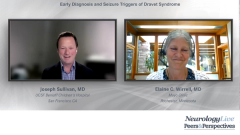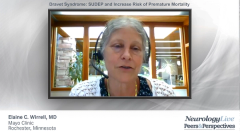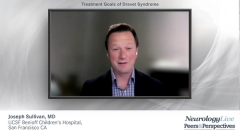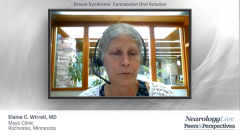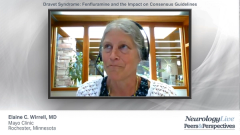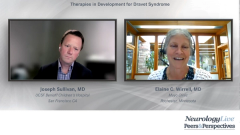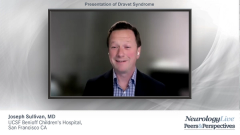
Managing Expectations for Patients With Dravet Syndrome
Key opinion leaders discuss managing patient expectations regarding clinical trials for Dravet syndrome treatment.
Episodes in this series

Joseph Sullivan, MD: The families who are coming to you and asking about these therapies, how do you manage expectations?
Elaine C. Wirrell, MD: I think I share their enthusiasm, because it’s hard not to. This sounds very exciting. They’ve done some very careful animal studies that have looked at this. The Encoded [Therapeutics, Inc therapy] also has that regulatory sequence that allows the gene to target the GABAergic interneurons, where the problem is in Dravet syndrome. So I certainly share their enthusiasm. I think they need to understand that although it may seem to work well in mice, mice are not humans, and we need to do careful studies. And our Dravet families have been through quite a number of clinical trials recently, and I think they fully understand, and they support the need for clinical studies. They want to be sure that a therapy is safe. They have a lot of excitement about it, but they also want to be sure that therapy is safe, and so they encourage us to do that. Families are very keen to be involved in these clinical trials overall. Then I think connecting them as well with organizations like the Dravet Syndrome Foundation [is important]. They can meet other families to discuss, “How are you thinking about this?” They put pages online that summarize these trials. I think that’s very helpful as well. I think discussing with the families the potential benefit, the potential risks, and then updating them as we hear more [is the way to manage expectations].
Joseph Sullivan, MD: Absolutely. I think it brings it full circle, in terms of the importance of making this diagnosis as early as possible so we can make families aware of these potential clinical trial opportunities. Because especially with these potentially disease-modifying therapies, I think our collective feeling is that the sooner you intervene the better, so that’s going to put the pressure on us as a clinician community to make this diagnosis as early as possible, to educate families about what is the likely outcome with our current medications. I feel so grateful that families put their trust in me in recommending these trials. I get that hard question, “If it was your son or daughter, what would you do?” I think we’re so indebted to the patient community for trusting their kids in these trials to try to improve not only their lives but the lives of future patients with Dravet syndrome.
Elaine C. Wirrell, MD: I agree. Part of it is the importance of careful education for the families, because if you’ve got a 12-month-old with Dravet, they’re probably developmentally still looking pretty normal. For them to understand what that disease holds, we can certainly provide some of that information, but I think connecting with the Dravet Syndrome Foundation is also really empowering for them to understand the natural history of this disease and to make informed choices for their child.
Joseph Sullivan, MD: Thank you for watching this NeurologyLive® Peers & Perspectives®. If you enjoyed the content, please subscribe to our e-newsletters to receive upcoming programs and other great content in your inbox. Thank you so much.
Transcript Edited for Clarity
Newsletter
Keep your finger on the pulse of neurology—subscribe to NeurologyLive for expert interviews, new data, and breakthrough treatment updates.

